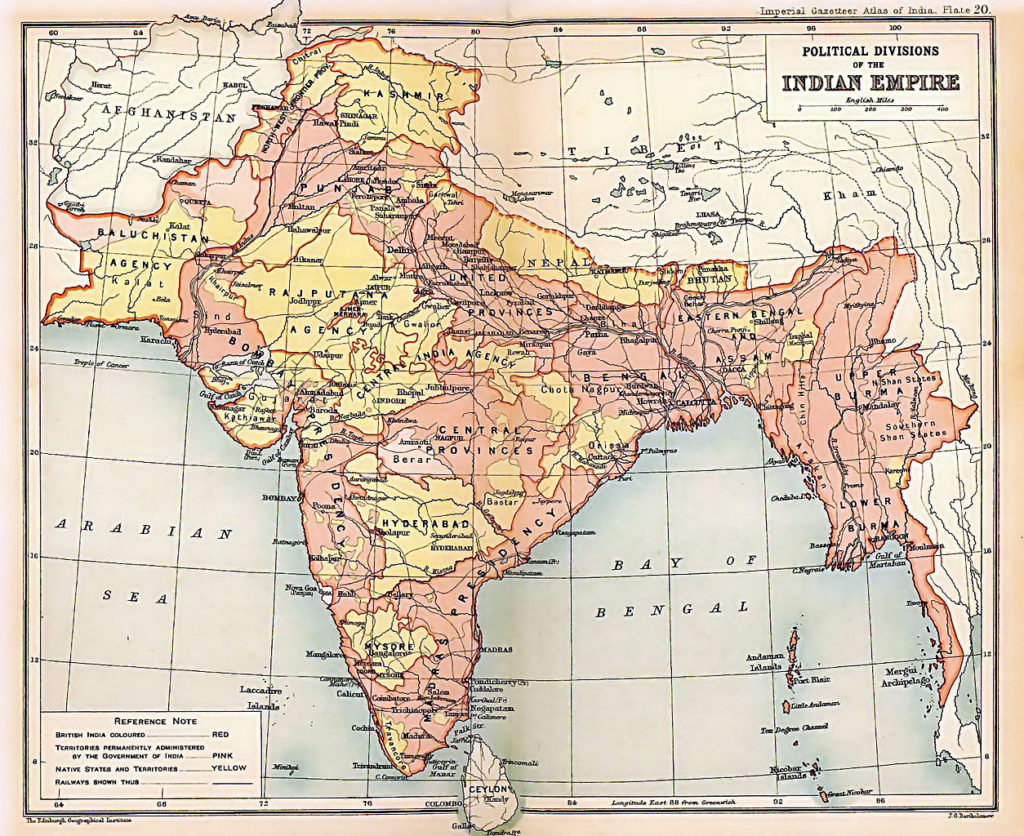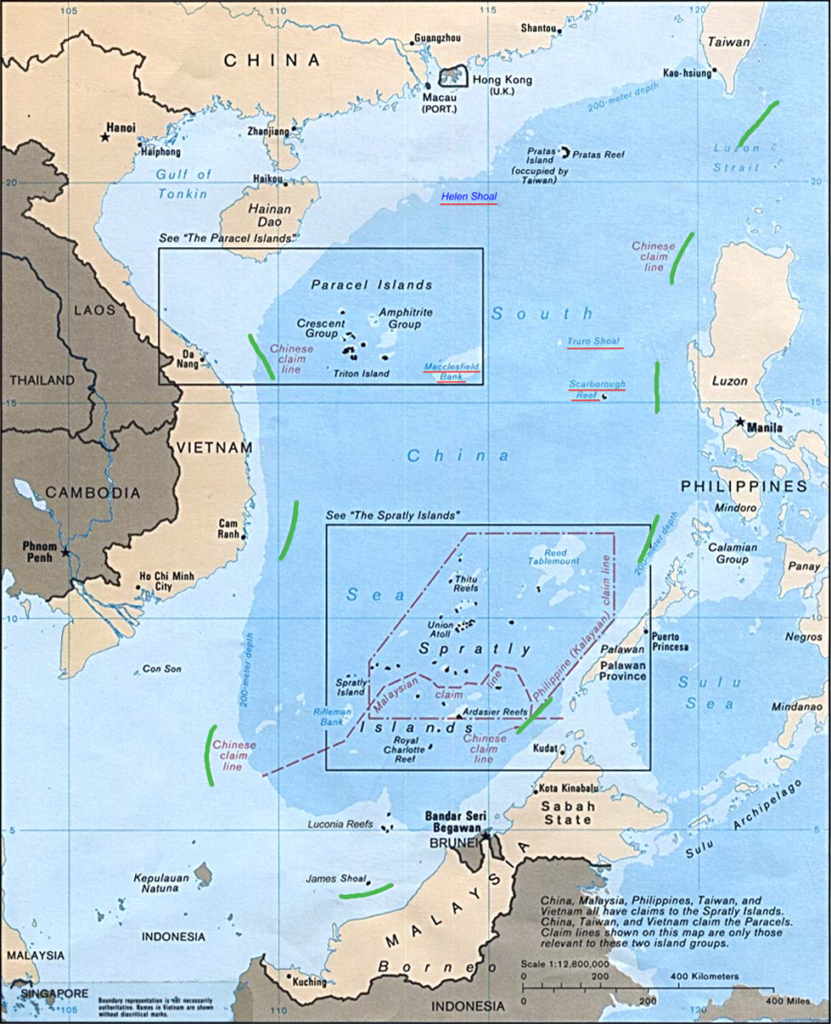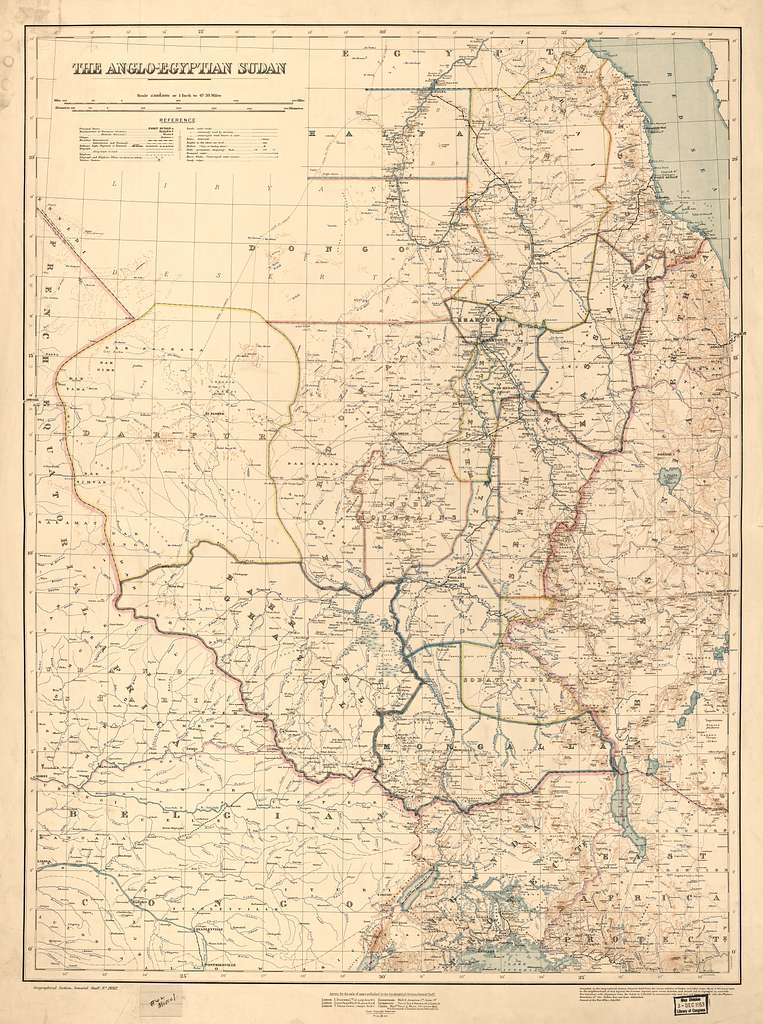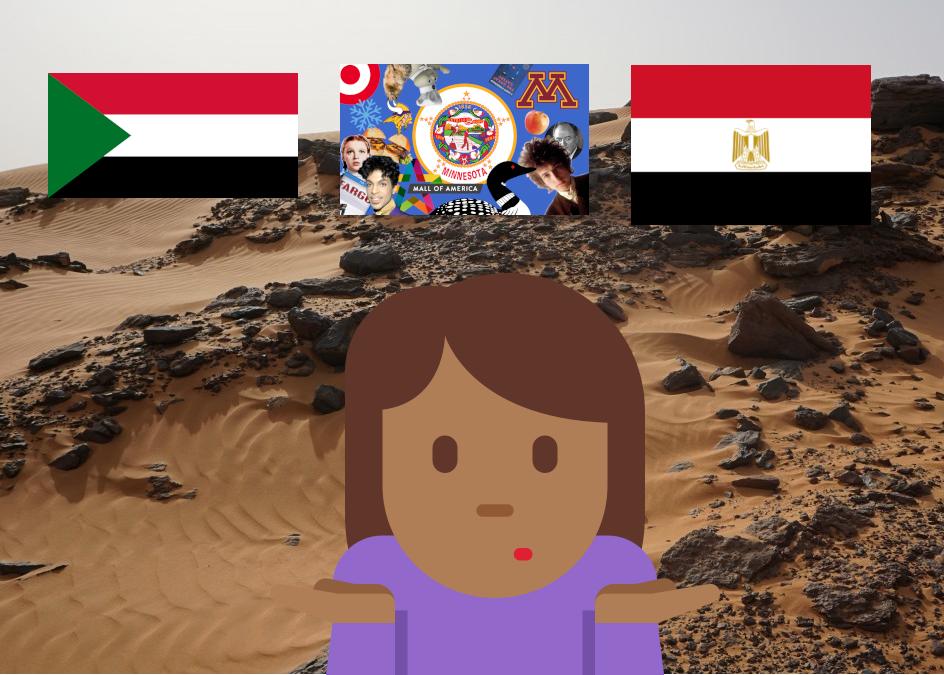What does it mean to own land? Or to be a country? What an insane pair of questions to open a piece posted on a website that hosts a 43 paragraph long story about the poop emoji. Today, enacting domain over a territorial entity is complex. Generally, a country is a country because it controls its own territory and benefits from some form of recognition from other countries. That second part is optional.
Most of Earth’s land falls under the jurisdiction of one country, and most countries recognize these jurisdictions. Sometimes, claims overlap, and countries argue (or, worse, argue with guns) with one another over who gets to operate a postal service in the territory in question. These disputes usually have some basis in history. For example, the territories of Jammu and Kashmir on the Indian continent are contested between India and Pakistan because those countries were once one country colony, British India. When India gained independence, instead of remaining one unified body, its would-be governors agreed to split the land between the mostly-Hindu India and the primarily-Muslim Pakistan. The idea pleased both parties, but deciding on where to place the border between the two infant nations would be a more difficult challenge. Luckily, deciding wasn’t up to them; instead, it was the job of Sir Cyril Radcliffe, a British dude largely unfamiliar with India given five weeks to make a decision. Quick! Pin the border on India/Pakistan.

Today, India is mostly Hindu and Pakistan is mostly Muslim, but the Hindu and Muslim populations of pre-division India weren’t as cleanly clustered. After the border was drawn, millions of Indian Muslims and Pakistani Hindus gradually came to feel that they were not welcome in their homes and packed up to move to a land they had never known. That’s what happened where the border was clearly defined. Up north, both India and Pakistan laid claim to the regions of Jammu and Kashmir, a set of Himalayan territories who, at the time of division, had a Walder Frey-esque ruler who had so far refused to pick a side. Eventually, he chose India. This ruler, Hari Singh, was Hindu. Most of the people of Jammu and Kashmir were (and are) Muslim. Today, both India and Pakistan still lay claim to the region. It’s officially labeled a contested territory.
Kashmir is one of the most famous contested territories, but it’s far from the only one. China lays claim to a small group of islands in the South China Sea that are currently administered by Japan. China’s claim is based on the “nine dash line” a vague drawing published on a map of Chinese territory in the 1940s. Since then, the Chinese government has maintained claims of sovereignty over the sea. In the absence of territory, they’ve started to build their own. Either way, the objective here is the water. China’s a big country, but its oceanic resources are limited, mostly due to the inconvenient positions of Japan, South Korea, the Philippines, and Vietnam.

Since its occupation by Russian military agents in 2014, ownership of the Crimean peninsula in the black sea has been disputed between the Russian Federation and Ukraine. Russia also maintains a military presence in the narrow mountain corridor of Transdniestria, a mostly-unrecognized country wedged between Ukraine and Moldova, but recognized as Moldovan territory.
The most famous and bloody disputed territory is, without a doubt, Hans Island. Located off the northern coast of Greenland, the scenic rock plays host to a population of zero people torn between the warlords of Denmark and the military junta that rules Canada.
These aren’t the only contested territories. There are a ton more. A lot of them are less interesting. They’re also not really surprising. If my neighbor and I descend into sweaty fisticuffs twice a month over the boundary that denotes where he can use his weed-whacker and where I can hoist my twelve bird feeders, is it any wonder that the beefier, sweatier rulers of the world argue over their own borders?

But enough about land people fight over. What about the territories no one wants?
Most of the world’s territory is claimed by one of 197 or so countries. As we’ve discussed, some of it is even claimed by two or three. Totally unclaimed land is a rarity. The most famous example of land going ungoverned is Antarctica, but not for a lack of trying. A totally unclaimed continent is a colonialist’s wet dream, and, indeed, most of it has been claimed in some way by the United Kingdom, Norway, France, Australia, New Zealand, Argentina, and Chile. The United States and Russia, the bad boys of the colonial world, have reserved the right to make their own claims in the future.
But none of these claims really matter, because all the countries to have made them are signatories of the Antarctic Treaty, which states that the frozen continent should be used for international science and not for war. A beautiful, transnationalist gesture that has nothing to do with whether or not people can survive there.
So Antarctica’s different. But there’s one other place on Earth that remains unclaimed: Bir Tawil.
Image: Cmglee, McGeddon on Wikipedia
It’s a sort of geographical trapezoid in north Africa set between Egypt and Sudan. Much like Antarctica, Bir Tawil is a desert, and no one lives there. At least not permanently. But no one lives in most of the Sahara. That doesn’t stop other countries from claiming it. Bir Tawil’s situation is unique.
Much like India, Egypt and Sudan were both, at one time, under the British Empire’s control. Egypt eventually became independent and co-ruled Sudan with its former colonial dad. After colonial dominion ended in both countries, a set of agreements were published regarding the location of their borders. Two of these treaties disagree regarding the status of a couple of territories. One says that Bir Tawil belongs to Egypt, and the other says it’s rightfully Sudanese. So we have an old-fashioned Kashmir situation on our hands, right? Obviously not. The reason is that the two documents disagree on a second territory, called the Halayib Triangle. Halayib is larger than Bir Tawil, boasts a permanently-settled population, and it has a coastline on the Red Sea. Compared to Bir Tawil, it’s a geopolitical beefcake. The paper that says Bir Tawil belongs to Egypt gives Sudan dominion over Halayib. The document that gives Sudan ownership over the desert territory gives the seaside triangle to Egypt.
Whichever country claims ownership over Bir Tawil is, implicitly, agreeing to the terms of the treaty that denies them the right to Halayib. So neither country claims it. They don’t even want to look at it. It’s hot and sandy and gross. Halayib, that’s some attractive land. No one wants Bir Tawil.

…well, not exactly “no one”. In 2014, a Virginian man made headlines for flying to Africa, trekking across the desert, and planting his own flag on a hill inside the unclaimed territory. Shit, I guess I can’t call it that anymore. The man, Jeremiah Heaton, founded the Kingdom of North Sudan and named himself King. So far, this story looks like it’s building Heaton out to be the familiar sort of slimy, privileged white guy that we don’t really want to be hearing about right now, but his reasoning is a little more pure than a callous desire to be the last white overlord in a continent hit hard by the legacy of colonialism. Heaton has a daughter, and his daughter wanted to be a Princess.
So, instead of following in the footsteps of countless fathers before him and letting her watch Frozen on repeat so many times that the line between reality and fiction became irreversibly blurred, Heaton boarded that plane and took to his fourteen-hour journey through the Sahara. Heaton’s daughter wasn’t the first American girl to put “be Princess” at the top of her to-do list, but in his eyes, he’d be the first to make that dream come true.
It’s easy to poke holes in this dream. A white dude claiming a chunk of Africa and naming himself King in 2020? The optics aren’t great, guy. But the situation also isn’t quite as bad as we might make it out to be. Bir Tawil doesn’t have a permanent population, so he’s not exercising dominion over anyone. It’s in Africa, sure, but I doubt Heaton targeted it for that fact and not for its unique role as the only unclaimed piece of land outside Antarctica. It’s easy to see why, in a world where almost everything has been claimed by some sort of power, a person may want to leap at the option to put their name on what hasn’t. That’s why Heaton isn’t the only one to have done it.
Guardian correspondent Jack Shenker made the trip in 2010 and documented it in a longform piece here. An Egyptian medical student studying in the Caribbean, Kareem Hamdy, claimed to have claimed the land for himself in 2010. Hamdy’s goal was to build the “United Arab Republic”, a territorial body meant to represent displaced people from around the world. No word on whether or not he’ll let me be a Princess.
In 2017, an Indian man, Suyash Dixit, made the same trek to the unwanted, inhospitable trapezoid and planted his own flag. In a Facebook post, he wrote “I, Suyash Dixit, first of my name and the protector of the realm, declare myself as the king of ‘Kingdom of Dixit’”. I think this is why monarchies are failing elsewhere but super plentiful in Bir Tawil; things would be a lot easier in the British Commonwealth if the Queen stole more of her speeches from Game of Thrones.

Do any of these guys really own Bir Tawil? Of course not. But do any of them actually want to own it? Shenker saw the trip as a neat story opportunity. Dixit wanted to make a name for himself. Heaton wanted a present for his daughter. They’re all playing a game. And in a way, so are Sudan and Egypt. Their mutual donning of the “not it” doctrine regarding Bir Tawil is each power’s way of accepting the rules of a game they play with one another. When we really sit and think, aren’t all countries just playing games with each other?
Lmao just kidding. But really, claims are weird. And Sudan and Egypt’s feud over a territory neither has a particularly major stake in might prove that. That’s not to criticize either of these two countries, though. They’re playing a game everyone else is playing. China vomiting out man-made islands in the name of extending its legal fishing range is nonsense, but it’s potentially effective nonsense. Letting one foreign guy draw the line between two newborn nations with extremely heterogeneous populations is silly, but now it’s sixty plus years of geohistory. And planting a bunch of army men in a barely strategic, barely populated mountain valley hundreds of miles from your country seems pointless, but it’s been happening for decades.
There are countless examples of major world players playing stupid games in the name of geographic supremacy or something equally dumb. It’s official United States policy that unclaimed islands with big enough piles of bird shit are legally American.
A claim only gets you so far. China’s nine-dash line is well known and the efficacy of its communist Palm Jumeirah is questioned, but not always condemned, because China is an established political and military power. The Indo-Pakistani border was passed without question (exempting Kashmir and a few other questions) because it was drawn by the British, an established political and military power. And when Colonel Lance Washington is recognized for planting the American flag on a pile of seagull refuse in the Pacific ocean, it’ll be because the United States is the premier political and military power.
Those other guys don’t have the resources to run a country. It’s hard to imagine Bir Tawil has the resources to be a country. But that doesn’t matter. Not really. They’re not playing the same game.
Read More
- This man is the latest in a series of travellers to declare ownership of a bizarre no man’s land in north Africa by Alexandra Ma for Business Insider
- Va. man plants flag, claims African country, calling it ‘Kingdom of North Sudan’ by Ileana Najarro for The Washington Post
- Welcome to the land that no country wants by Jack Shenker for The Guardian
- What Does the Nine-Dash Line Actually Mean? by Marina Tsirbas for The Diplomat
